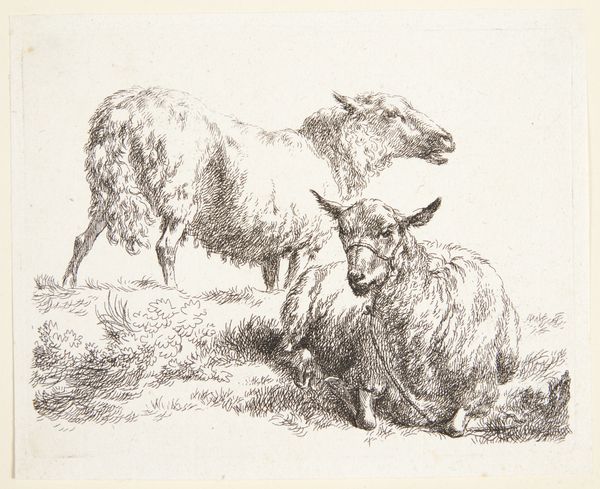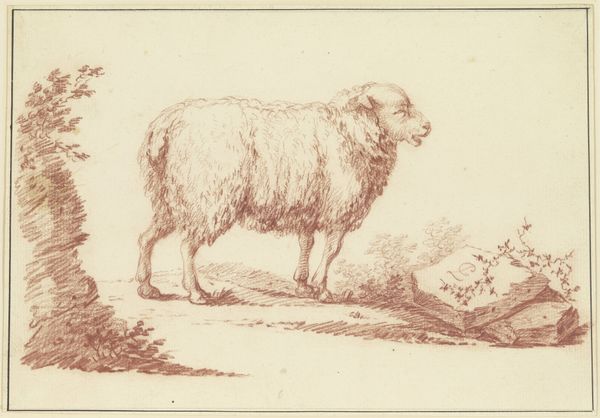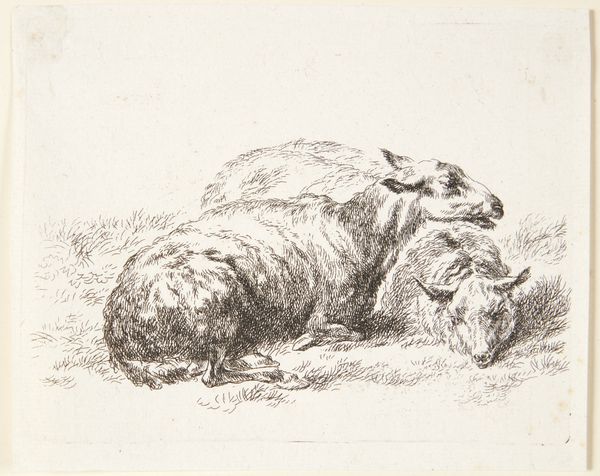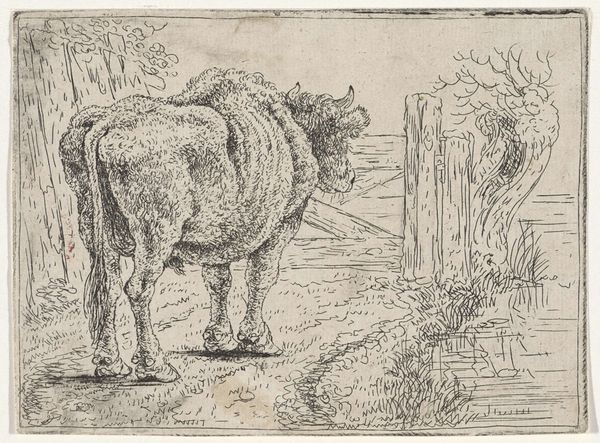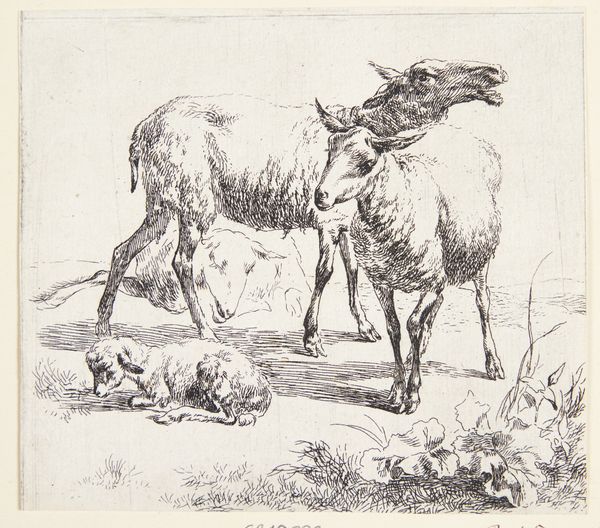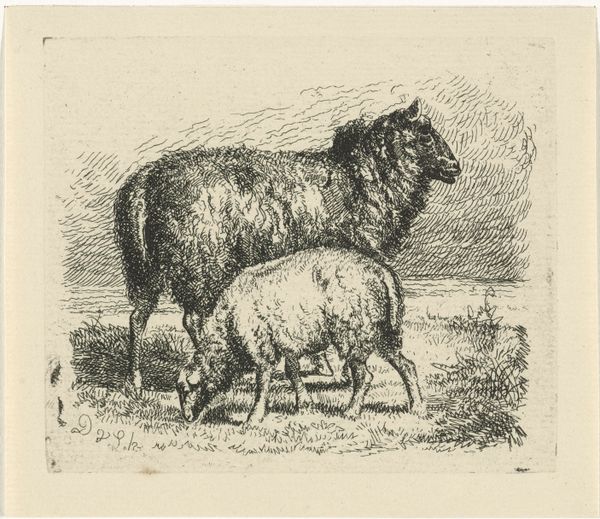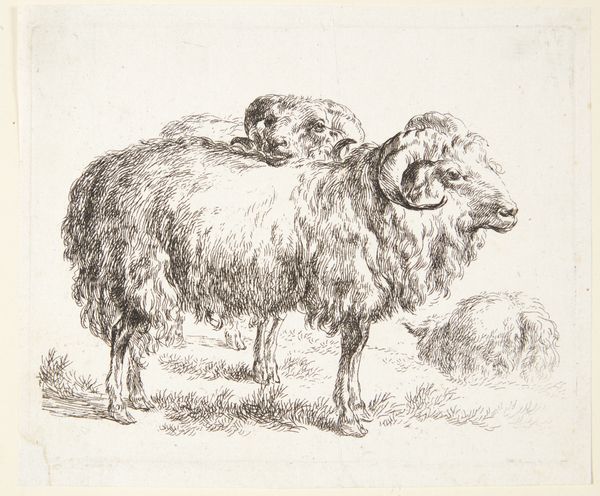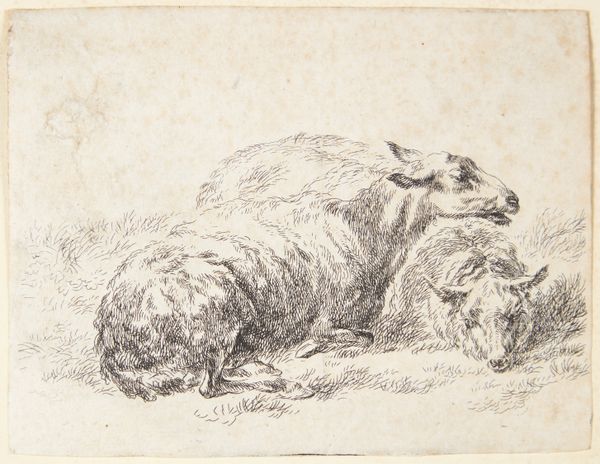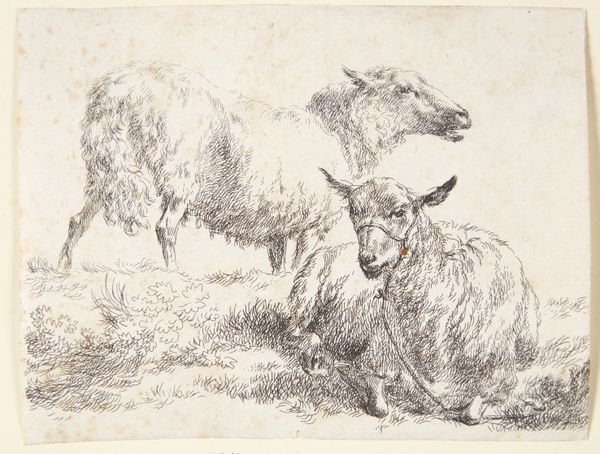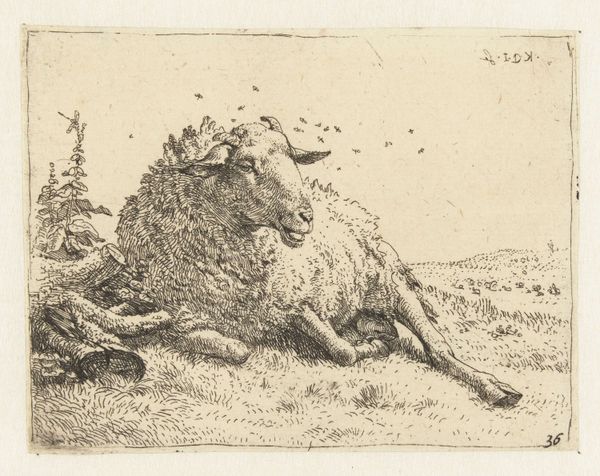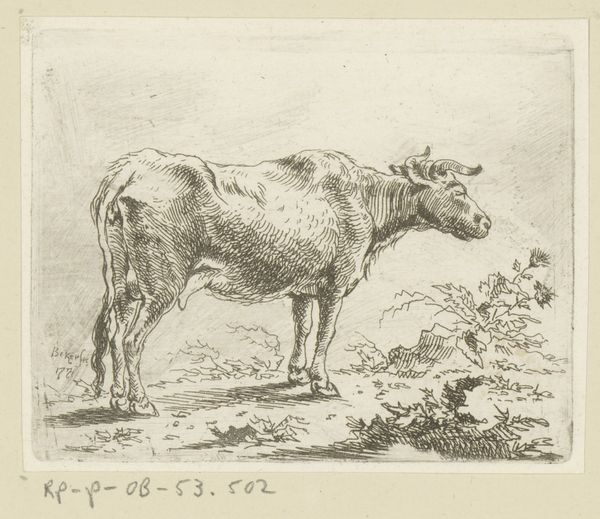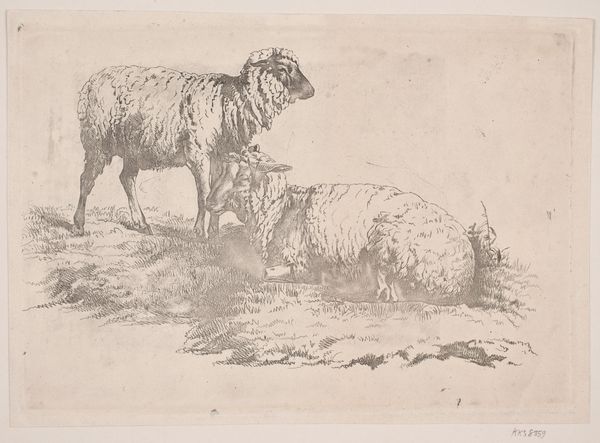
drawing, print, etching
#
drawing
#
ink drawing
#
baroque
#
animal
#
dutch-golden-age
# print
#
etching
#
landscape
#
realism
Dimensions: 103 mm (height) x 128 mm (width) (bladmaal)
Editor: So, this is "A Standing Sheep," created between 1620 and 1683 by Nicolaes Berchem. It's an ink drawing, etched on paper. I'm struck by the artist's use of line to define the sheep's wool. How would you interpret this piece? Curator: The articulation of form through line is indeed compelling. Observe how Berchem varies the density and direction of the etched lines to create a sense of volume and texture. Notice how the concentration of lines around the sheep's body not only suggests the wool's density, but also sculpts the form, defining its three-dimensionality. Editor: It's like the line *is* the form, in a way? Is there anything symbolic in his decision to make a drawing solely dedicated to a sheep? Curator: Functionality of line surpasses mere representation here. The medium itself communicates tactility and spatial depth. Do you notice how Berchem orchestrates light through strategically placed hatchings and cross-hatchings? It would also be pertinent to explore his broader oeuvre and socio-historical context. He has several similar works to this. How do these other compositions affect your appreciation of the object’s arrangement of line, tone, and form? Editor: That’s a great point about seeing this in the context of Berchem's other work. I suppose by isolating the animal he is also making us consider his study of nature and realism as core art values. Thank you! Curator: Precisely. Considering his technique in concert with the visual representation, allows for a much deeper reading of form and intent. It's been enlightening to dissect this artwork with you.
Comments
No comments
Be the first to comment and join the conversation on the ultimate creative platform.

